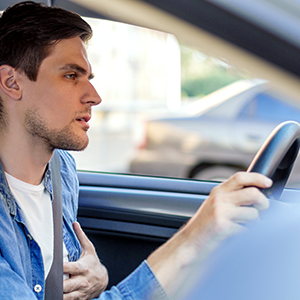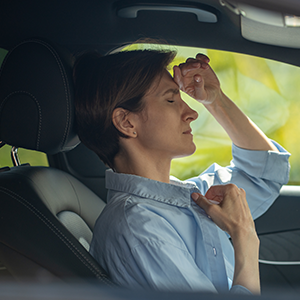
Steering Through a Heart Attack: A Roadmap to Survival
On the Road to Safety: Navigating a Heart Attack While Driving
01 July 2024
Just presume You’re cruising down the open road, enjoying the scenery and the feel of the wind in your hair. Everything seems perfect until suddenly, your chest tightens, and an overwhelming sense of discomfort washes over you. Your heart is racing, and you’re struggling to breathe. You might be experiencing a heart attack while driving.
Reasons Behind Sudden Heart Attack While Driving
Certainly! Here are some genuine reasons for heart attack while driving. Here we should look into core and other factors to understand the problems.
Core Factors
Acute Coronary Syndrome (ACS):
This is a general term to describe a condition whereby there is sudden occlusion of the blood that is supplied to the heart. Some of these conditions are myocardial infarction more commonly referred to as heart attack and unstable angina.Coronary Artery Embolism:
Another factor where a blood clot or other material can enter the coronary arteries and causes a blockage, leading to a heart attack. This can happen due to some conditions such as atrial fibrillation and it can also happen after some procedures that a person undergoes.Coronary Artery Spasm:
Sometimes the coronary arteries can constrict and limit blood flow to the portion of the heart muscle which leads to a heart attack. This can occur without severe degrees of atherosclerosis, which means that the literature claiming decreased effectiveness of for patients with moderate to severe peripheral vascular disease also applies to those in this group.Myocarditis:
It is characterized as an inflammation of the heart muscle which develop from infections, auto-immune diseases that causes bad health to the heart muscles and lead to heart attack .Takotsubo Cardiomyopathy (Broken Heart Syndrome):
This is mostly a transient illness that precedes a stressful condition or an emotional shock. It triggers an immediate rupture of the heart muscles and the symptoms are the same as that of a heart attack.Arrhythmias:
Abnormal heart rhythm s, in particular, VF or SVT, can lead to loss of heart contractility, meaning a heart attack if the condition does not receive proper intervention.Congenital Heart Defects:
Some forms of CHD may have a predisposing effect on subsequent heart attack especially if they cause, other congenital coronary artery anatomy or other congenital heart disease.Infective Endocarditis:
Endocarditis or valvular disease of the heart causes formation of the thrombi or emboli, which blocks the blood flow by reaching out to the arteries of the heart, particularly the coronary.
Other Factors
Stress and Anxiety
The daily hustle and bustle of life leads to chronic stress and anxiety, both of which are known risk factors for heart disease. When you’re stressed while driving, your body releases adrenaline, which can trigger a heart attack.
Pre-existing Health Conditions
If you have pre-existing conditions such as hypertension, diabetes, or high cholesterol, your risk of a heart attack while driving is higher. These conditions can cause plaque buildup in your arteries, leading to a sudden blockage.
Poor Diet and Lifestyle Choices
Unhealthy eating habits, lack of exercise & smoking can contribute to the development of heart disease. These lifestyle choices can catch up with you, even when you’re on the road.
Overexertion
Long hours on the road, especially for truck drivers or those with sedentary jobs, can lead to overexertion and fatigue. This strain on the body can increase the risk of a heart attack.
What Happens During a Heart Attack While Driving?
How to Detect Pre-heart Attack Symptoms While Driving?
Detecting pre-heart attack symptoms while driving can be challenging, as many of the warning signs are subtle.
However, being attuned to your body and recognizing these signs can save your life. Here are some pre-heart attack symptoms to watch for while on the road:
How to Counter a Heart Attack While Driving?
If you suspect having a heart attack while driving, an instant action is crucial. Here are some steps to take to increase your chances of surviving this harrowing experience:
Stay Calm
It’s easier said than done, but remaining calm is essential. Panic can exacerbate your symptoms and hinder clear thinking.
Loosen Clothing
Tight clothing can exacerbate chest discomfort. Loosen any constricting garments to make breathing easier.
Call for Help
Dial emergency services immediately if you have a phone with you. Describe your location and symptoms accurately.
Take Aspirin
If you have aspirin on hand and aren’t allergic to it, chew and swallow one, as it can help prevent further clot formation.
Pull Over Safely
If it’s safe to do so, pull over to the side of the road. Turn-on your hazard lights to alert other drivers.
Use Nitroglycerin (if prescribed)
If you have a prescription for Nitroglycerin and it’s within reach, take it as directed.
Co-passenger can be Saviour of Driver during a heart attack while driving. Check How?
If a driver shows signs of a heart attack, a co-passenger can help by staying calm and assisting the driver in stopping the vehicle safely.
- He/she should call emergency services (112) and provide detailed information.
- Keeping the driver calm and comfortable, loosening tight clothing, and giving aspirin if appropriate are crucial steps.
- Monitoring the driver’s breathing and pulse, using an AED if available, and staying with the driver to provide reassurance until help arrives.
- If unable to call, flag assistance from other motorists.
Conclusion
Facing a heart attack while driving is a terrifying prospect, but staying informed and prepared can make a significant difference. Knowing the reasons behind such incidents, recognizing the symptoms, and taking immediate action can save your life.
Your safety on the road should always be a priority, and being aware of the risks and how to navigate them is a crucial part of that commitment. Stay safe, stay vigilant, and prioritize your health whenever you’re on the road.
References:
1. https://www.elephant.com/blog/what-to-do-when-a-heart-attack-occurs-while-driving
2. https://dobbersteinlaw.com/suffer-from-a-heart-attack-while-driving-what-to-do/
3. https://www.sakraworldhospital.com/blogs/travelling-and-driving-after-heart-attack/140
4. https://www.quora.com/What-should-you-do-if-you-are-experiencing-a-heart-attack-while-driving
Disclaimer: The information presented by Boston Scientific India is for educational purposes only and does not recommend self-management of health issues. The information should not be treated as comprehensive and does not intend to provide diagnosis, treatment or any medical advice. Individual results may vary and hence, it is advisable to consult your doctor regarding any medical or health related diagnosis or treatment options.
IC-1729302AB-1023
Related Articles
Tags
Heart Attack | Acute Coronary Syndrome | Myocarditis | Infective Endocarditis | Takotsubo Cardiomyopathy | Coronary Artery Spasm Heart | Attack While Driving | Arrhythmias | Stress and Anxiety | Pre-heart Attack Symptoms | Aspirin






